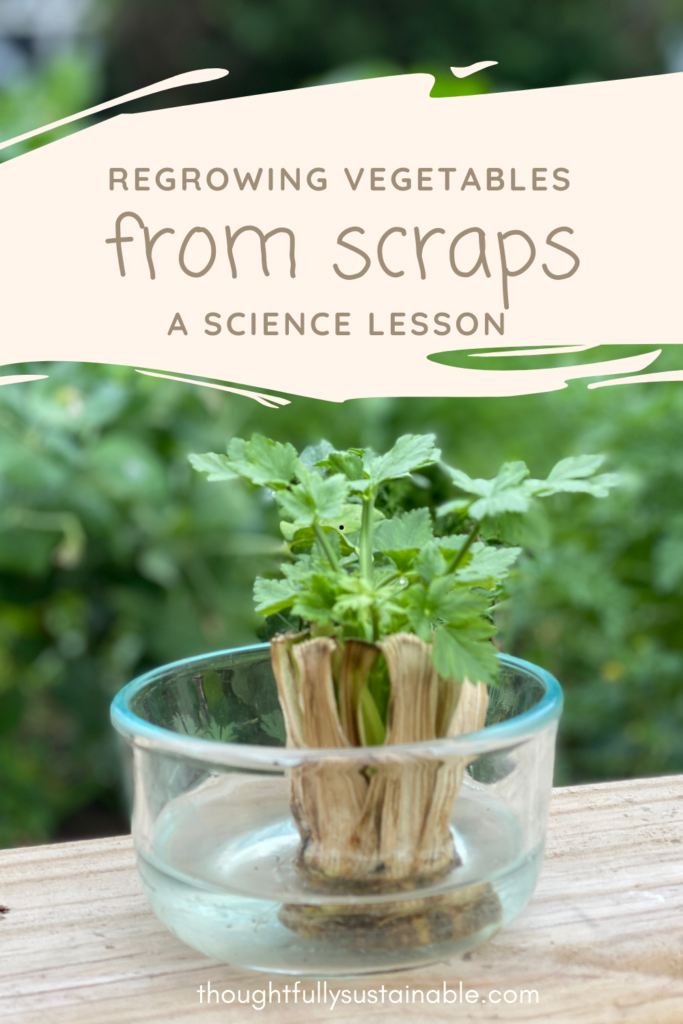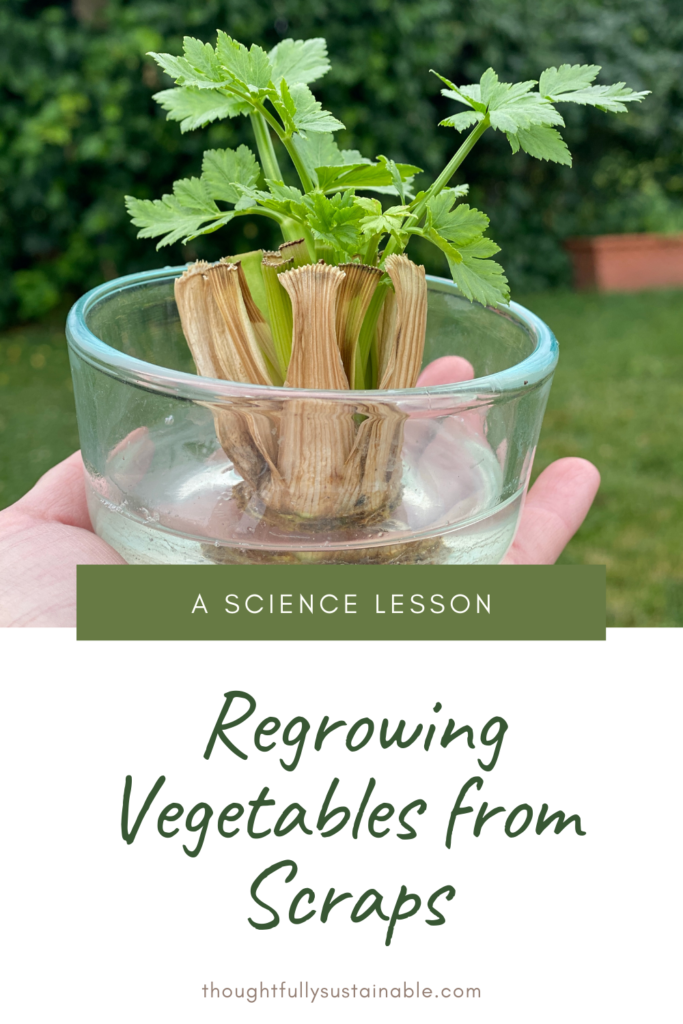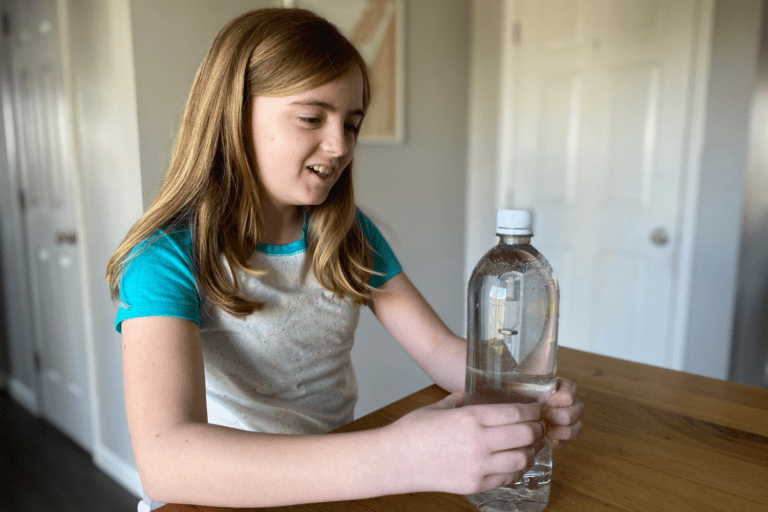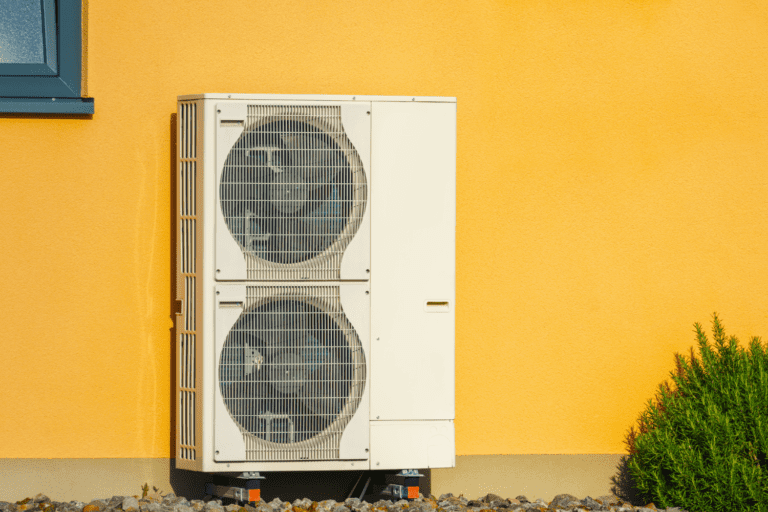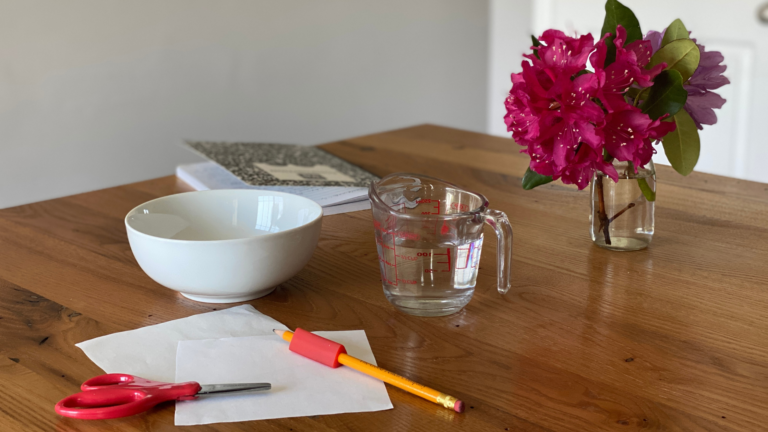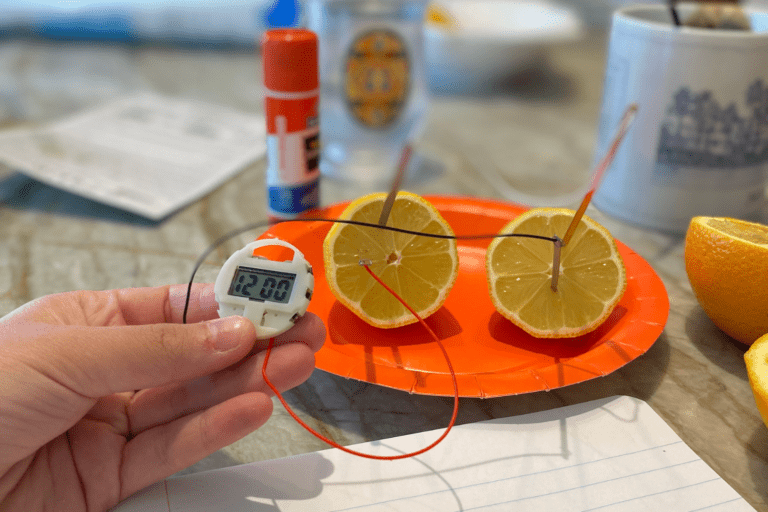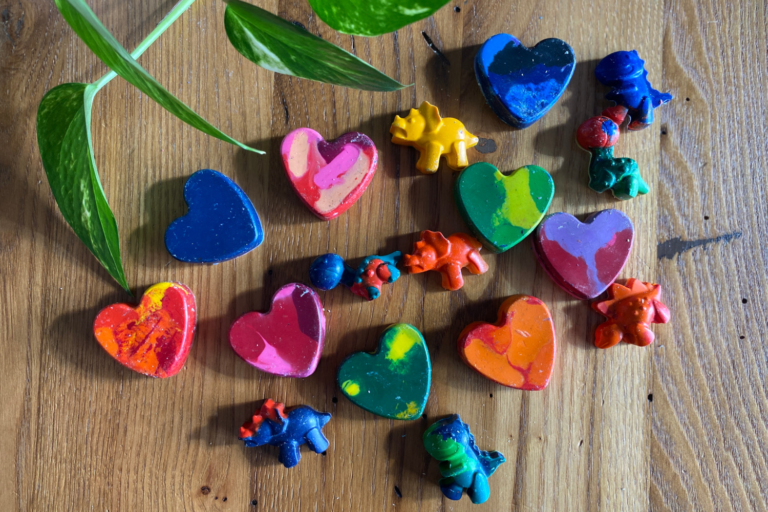How to Regrow Vegetables From Food Scraps + Free Science Experiment Printable
Want to reduce food waste while teaching your kids about climate change? Try regrowing vegetables from scraps with this simple sustainability science experiment and free science lesson printable!
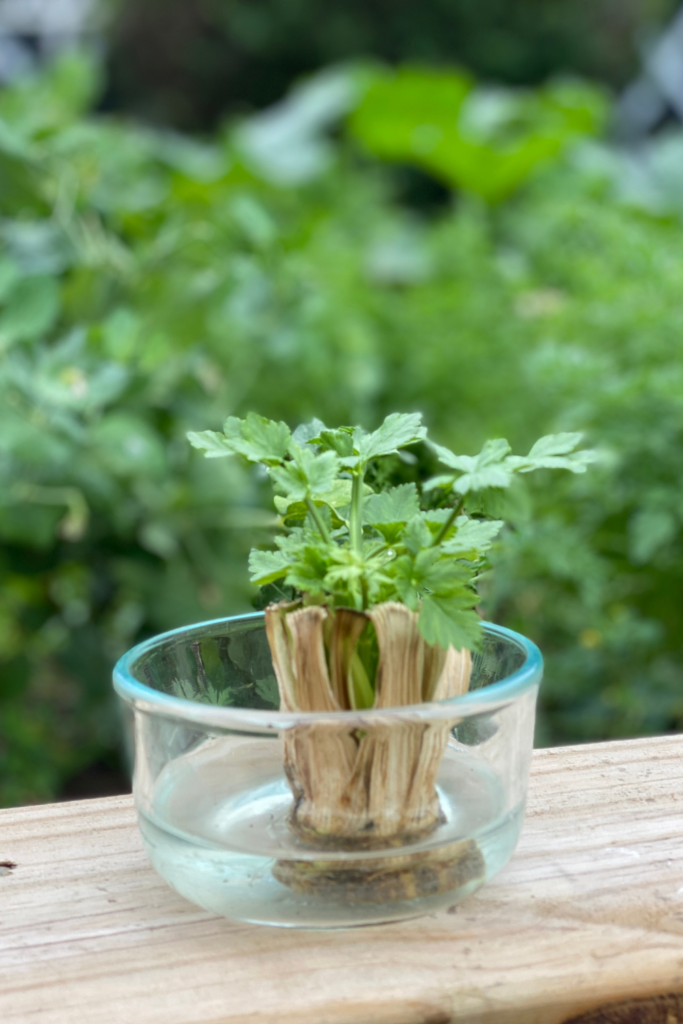
Were you raised with the phrase, “Don’t waste your food”? I know I was, and quickly learned as a young child that leftover night could actually be a thing of beauty; a buffet of food where I could pick and choose what I did (and did not) want to eat for supper. What couldn’t be repurposed for another meal was either made into a soup, taken to the compost bin or fed to the dogs.
Do not worry, we were very cautious as to what we fed to our pups.
Fast forward 30 years, and here I am teaching the same principles of avoiding food waste to my own two children. However, it feels even more important now, as the practice isn’t done just to save money, but to do our part to save the planet.
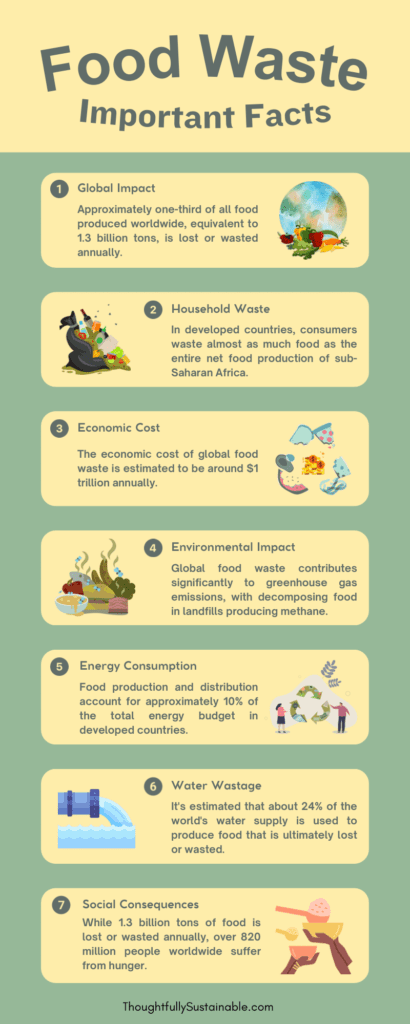
The Importance of Reducing Food Waste
Globally, food loss and waste accounts for a tremendous amount of greenhouse gas emissions. The World Resources Institute stated that “if food loss and waste were its own country, it would be the world’s third largest emitter of greenhouse gases – surpassed only by The United States and China.”
One main reason that wasting food is a serious issue has to do with how it decomposes. When food is placed in the trash and sent to a landfill, it breaks down anaerobically, which means in the absence of oxygen. This decomposition process creates carbon dioxide and methane gas. When food is composted or breaks down naturally (like an apple that falls from a tree and rots on the ground) it breaks down aerobically, which means in the presence of oxygen. The decomposition process creates carbon dioxide and water vapor.
The problem lies with the production of methane gas. Scientists have determined that this gas is really good at trapping heat in our atmosphere – approximately twenty five times better than carbon dioxide. Due to methane’s heat trapping power, along with its lifespan in our atmosphere, makes it a key player in raising our global temperatures, which causes our climate to change.
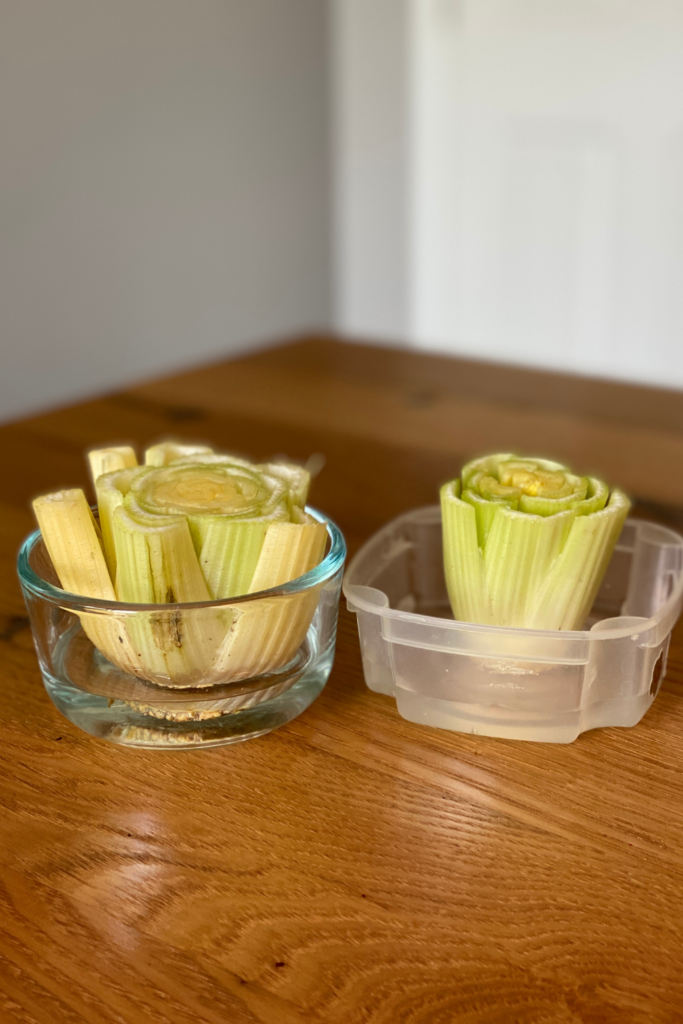
Ways to Reduce Food Waste
There are many individual ways to avoid food waste. Some simple tips that you can implement in your home are:
- Planning your meals ahead of time
- Purchasing only what you need
- Eating your leftovers
- Freezing food scraps to make soups
- Regrowing your food scraps
- Trying recipes that utilize the food you have
- Creating an “eat me first” spot in your refrigerator for foods that may be closer to their expiration date
- Composting
Each of these tips are easy to implement and, once started, can work towards decreasing the amount of food that is wasted in your home.



Regrowing Vegetables from Scraps
The process of regrowing your vegetable scraps is nothing short of magical! By introducing your learners to this technique, they will practice multiple mathematical skills while learning about the importance of food waste reduction.
During this experiment, students will be able to:
- Make predictions about the growth of the plant.
- Collect and record data
- Measure accurately using units
- Create a graph to depict the growth of the plant
- Determine if the predictions made about growth were accurate
- Discuss the importance of reducing food waste and its relationship to climate change
You may notice that the skills listed above mirror the scientific method, the problem solving steps scientists use to plan, execute and evaluate an experiment. Practicing these skills enhances students’ critical thinking and will prepare them for making logical decisions.
Materials Needed for Regrowing Vegetables from Scrap
In order to conduct this simple science experiment, you will need the following materials:
- End portion of Romaine lettuce, celery or green onion stalk, approximately 5-8 cm high
- Shallow dish (for lettuce or celery) or glass jar (for green onion)
- Water
- Measuring unit of choice* (paper clips, ruler or other small items for comparison)
- Access to a warm, indoor, sunny spot
*Note – depending on the age of your learners, using standard size small items such as paper clips or coins is a common way to introduce measurement skills. Additionally, small items provide young learners with a concrete example of making predictions for growth. “The lettuce will grow 3 paperclips high” may be easier for them to initially comprehend than predicting growth in centimeters. Use a ruler alongside whatever small item they’ve chosen to measure their vegetable regrowth to model and reinforce future skills.
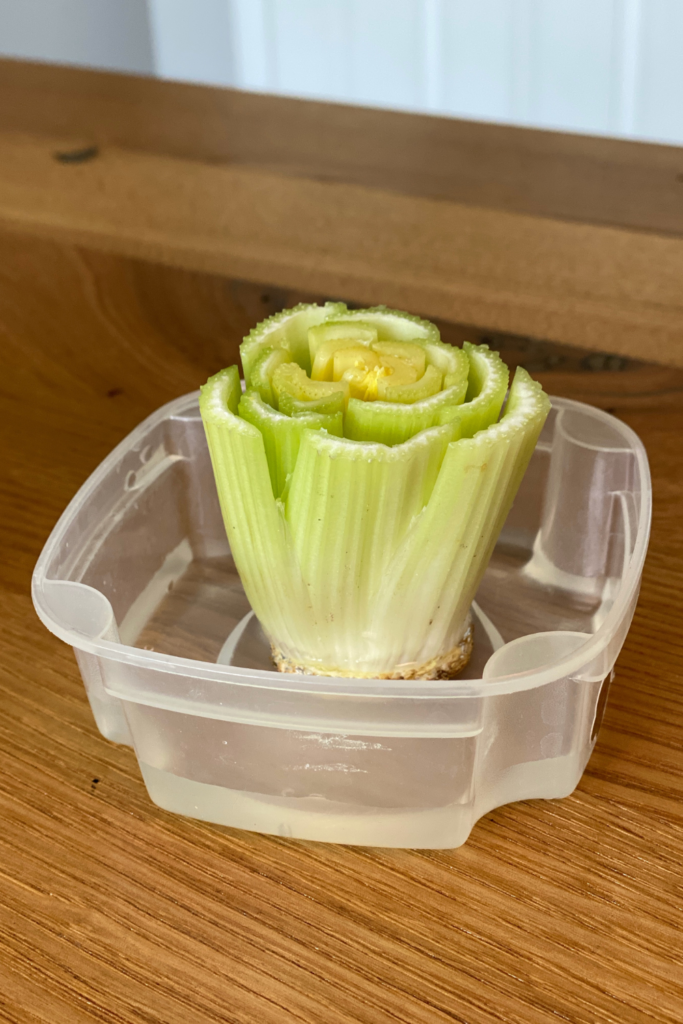
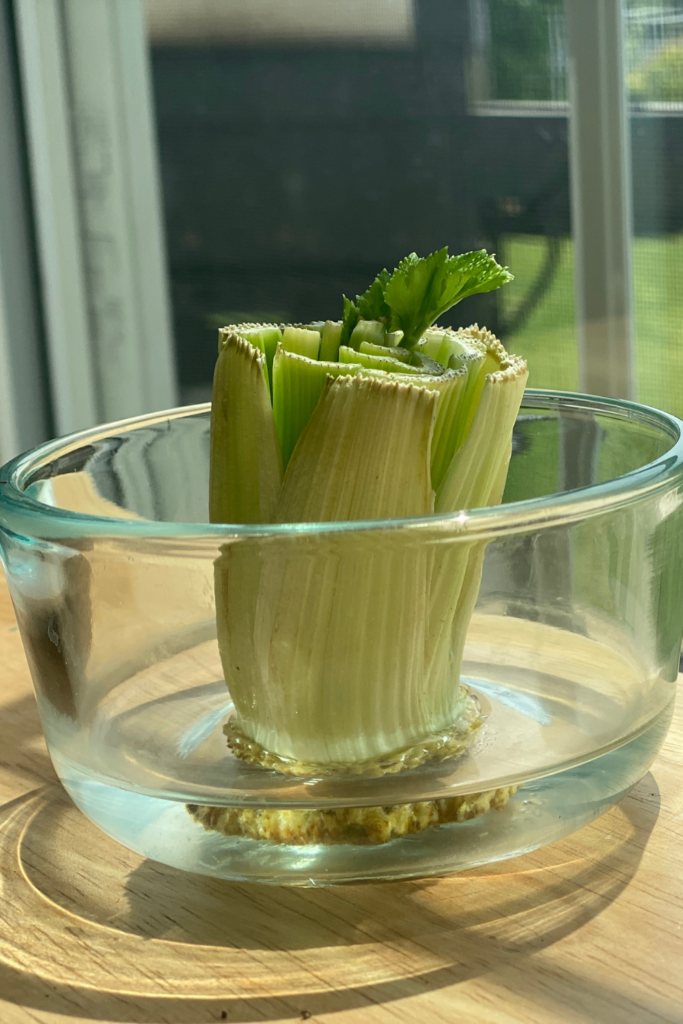
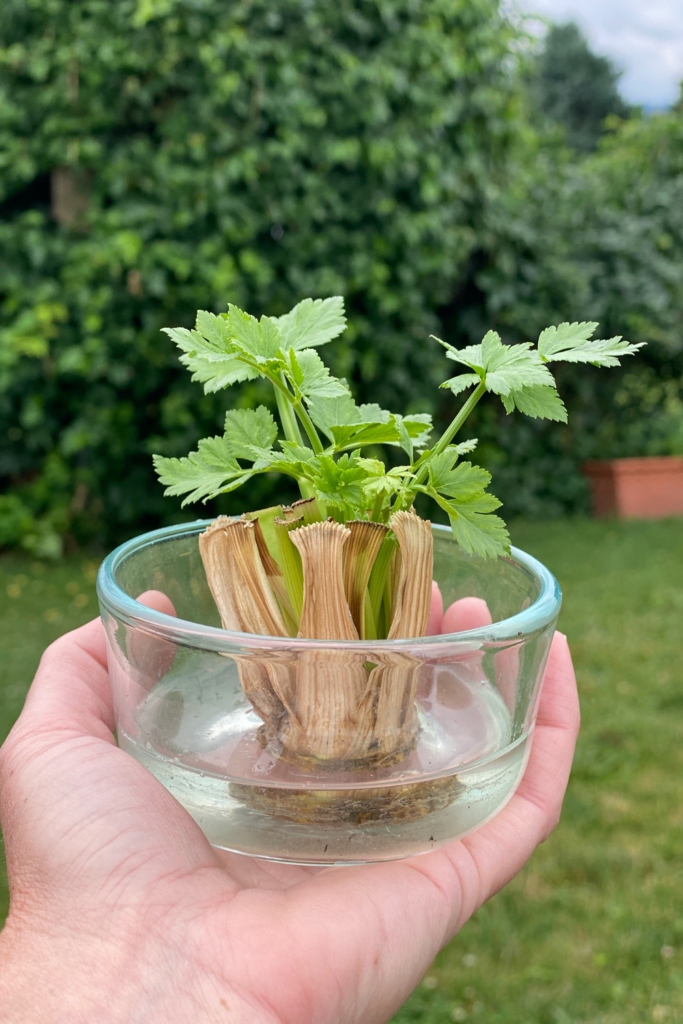
Regrowing Food From Scraps Science Lesson
Want this entire 24 page regrowing vegetables from scraps science lesson in printable worksheet form for your learners? I’ve got you! Click the button below to get this pdf lesson delivered to your inbox for FREE, complete with both teacher and student versions for primary and middle grades.
Introducing Vegetable Regrowth to Kids
During this experiment, children learn how to regrow a vegetable from a scrap by monitoring its vertical growth for 2 weeks. Additionally, they discuss the ecological importance of reducing food waste.
How can you make this happen in your home or classroom?
Start by having a discussion that looks something like this:
Teacher Prompt 1:
What are ways we can keep our Earth healthy?
Ideas they might suggest- pick up trash at the beach, plant flowers, water plants.
Teacher Prompt 2:
Did you know that eating leftovers could make our world healthier?
Explain: When leftover food gets thrown in the trash and sent to a landfill, it creates a gas called methane. This gas is really good at trapping heat in our atmosphere. As more heat gets trapped, the climate of Earth changes, affecting the plants and animals, including humans, that live there.
Teacher Prompt 3:
What can we do to waste less food?
Allow students to provide suggestions, possibly writing their ideas on the board. Then explain:
There are lots of ways we can avoid food waste. Planning your meals ahead of time with your family, donating or sharing food we aren’t going to eat, eating your leftovers, freezing food scraps to make soups, regrowing your food scraps and composting are all ways to save food from being wasted.
This week we are going to experiment with one of those steps; we are going to grow our own food from scraps! For example, when you help make a salad there’s always a little piece of lettuce leftover at the end. We can use that piece to regrow more lettuce! It might seem like magic but it’s just science!
Make Predictions Together
Once you’ve given your learners some background knowledge on the importance of reducing food waste, show them the type of food scraps they will be attempting to regrow. In this post, I’ll show you Romaine lettuce and celery regrowth, however you can also use green onion stalks. Ask them to make some predictions about the regrowth of their chosen vegetables, showing the measuring unit of choice.
- How many units will our food scrap grow in 1 week?
- How many units will our food scrap grow in 2 weeks?
Record these predictions on the board or in a notebook for future reference. Your learners will refer back to them at the end of the experiment to make comparisons between their data.
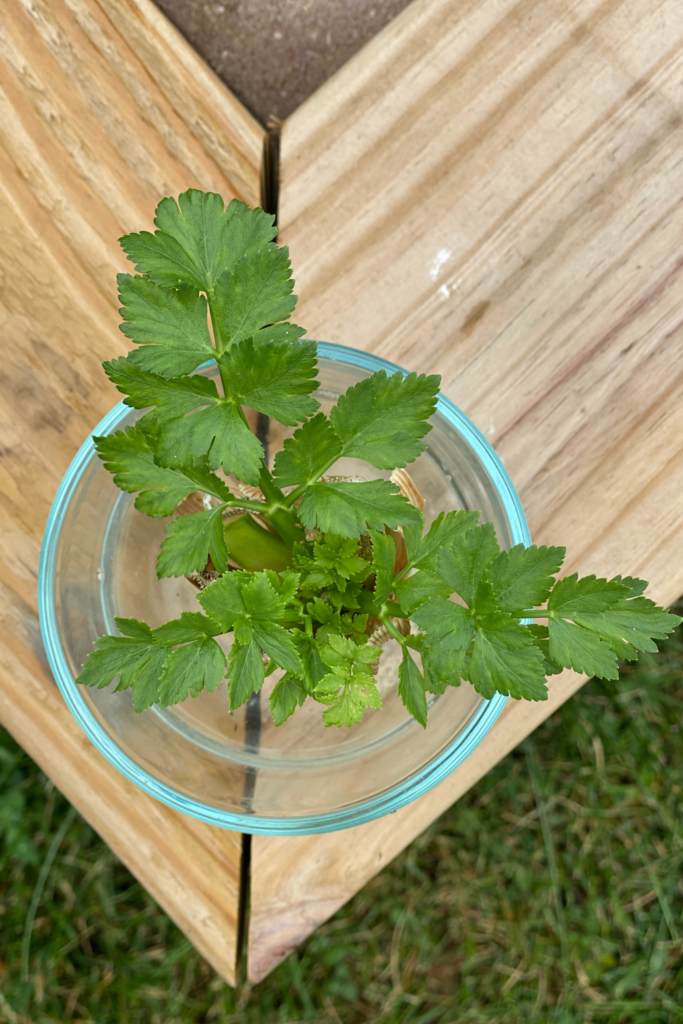
Procedures for Regrowing Vegetables from Scrap
Here are the simple steps to regrow lettuce, celery and green onions in your home or classroom while introducing the science behind vegetable regrowth to your learners.
- Obtain your materials.
- Place the end of your vegetable stalk in a shallow dish or glass jar.
- Pour enough water into the dish to create a depth of approximately 1 cm.
- Place the dish containing the food scrap on a sunny windowsill or countertop.
- Record your starting date and a value of 0 units for the initial vertical
growth. - Watch for growth in the center of the stalk and record the change in vertical growth in
units every other day for 2 weeks. - Change water every 1-2 days to avoid a slimy buildup on the food scrap.
- If a slimy film is detected, rinse the stalk in fresh water and change the water in the dish. If you are using green onions and detect a slimy film, you may need to peel off the outermost layer of the bulb prior to rinsing with water.
Observing Vegetable Scrap Regrowth with Kids
Using the unit of choice, students will measure the growth of the plant every other day for two weeks and record the value. For younger learners, data tracking can simply look like this:
“On (date of observation) my (type of vegetable scrap) grew (unit of choice).”
This sentence can be repeated each day an observation is recorded. Additionally, have your learners draw a picture of their vegetable scrap to go along with each written observation.
For older children, data tracking can be done by creating a line graph, with the date of observation on the bottom, horizontal axis (the x-axis) and the unit of measurement on the left, vertical axis (the y-axis).
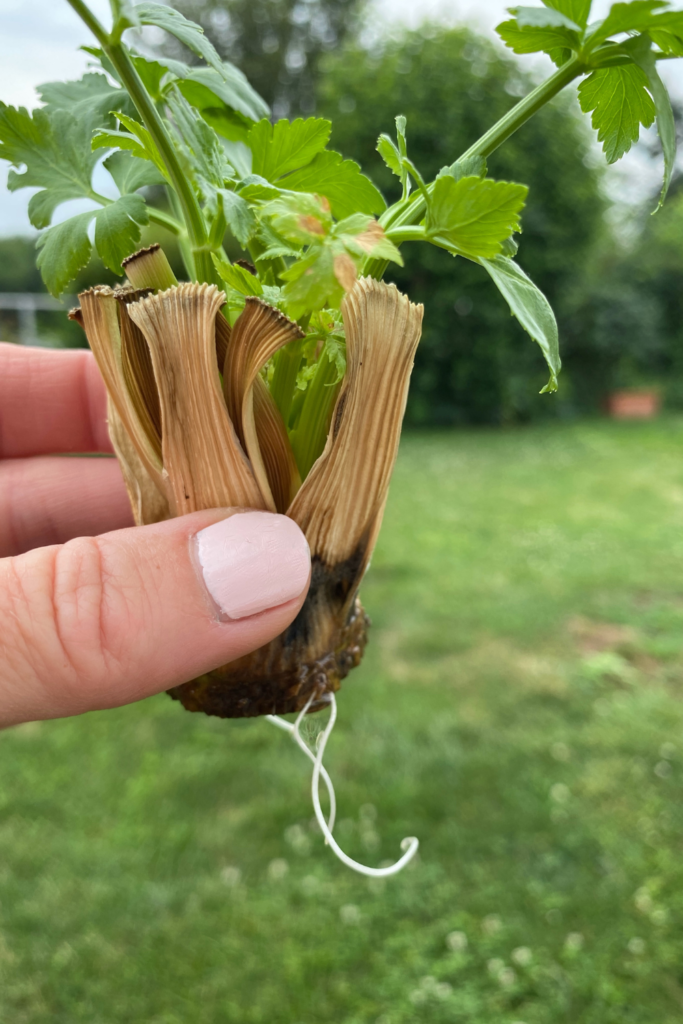
Analyzing Vegetable Growth and Drawing Conclusions
Once two weeks have passed, pull out the predictions made at the beginning of the science experiment and compare them to the collected data. Use the following questions to guide the discussion.
- How many units did you predict your scrap would grow in 1 week?
- How many units did your scrap actually grow in 1 week?
- How many units did you predict your scrap would grow in 2 weeks?
- How many units did your scrap actually grow in 2 weeks?
Next, use the following two questions to have your learners reflect on their experiment and draw conclusions.
- If we were to redo this experiment, what is a variable we could change to help it grow more? (possible answers may include: more/less sunlight, add more time, change water more frequently…)
- Describe the relationship between food waste and climate change.

Science Video Tutorial to Explain How to Regrow Vegetables from Food Scraps
Here is a step-by-step science video tutorial to walk you through the steps of starting the regrowing vegetables from food scraps science experiment. While you’re watching, I’d truly appreciate if you liked and subscribes to my YouTube channel, Thoughtfully Sustainable, to receive updates on my latest science projects and upcycled craft tutorials.
Go Further with the Science of Food Scrap Regrowth
Continue the learning that’s occurred with your children in this sustainability science experiment by trying one of the following extension activities:
Keep Growing!
Continue with frequent water changes and, once visible roots have been established, transfer the plants to soil to continue their growth. Students can monitor the growth rate of the plants and discuss if there are differences in growth rates between the water and soil mediums.
Try Growing a Different Food Scrap
If you tried growing lettuce from scrap for the first experiment, try growing celery or green onions from scrap for an additional investigation. Will they grow at the same rate as the previous vegetable? Do they need more or less sunlight to mature? Have fun brainstorming questions to compare your initial experiment with your new one!
Read Books About Growing and Eating Vegetables
Here are a few children’s book suggestions to extend their learning about growing food and food waste reduction.
- The Perfectly Wonky Carrot by Chris Newman
- The Curious Garden by Peter Brown
- Lola Plants a Garden by Anna McQuinn
- Eating the Alphabets: Fruits and Vegetables from A to Z by Louis Ehlert
- The Tree Lady by H. Joseph Hopkins
- Up in the Garden and Down in the Dirt by Kate Messner
- Growing Vegetable Soup by Lois Ehlert
Watch a Video about Climate Change
Watch the short video, “Climate Change According to a Kid” and discuss how reducing food waste can help keep the planet healthy.
Special Thanks
This post was kindly reviewed and edited by my friend, Katherine Steck @thejunkyardjournals whose expertise as a former elementary school teacher gave me guidance as to how to make regrowing food from scraps accessible to the youngest of learners!
If you like this post or have a question, please leave a comment below. Want to save this science experiment for a rainy day? Pin it to your favorite Pinterest board!
